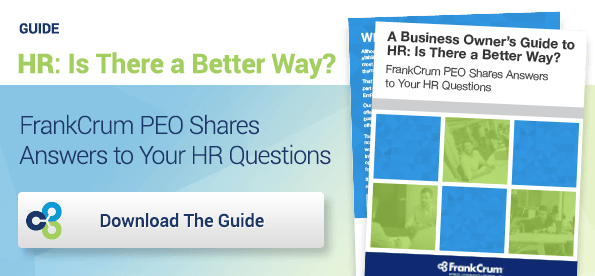 The following is an excerpt from our latest guide, "A Business Owner's Guide to HR: Is There a Better Way?"
The following is an excerpt from our latest guide, "A Business Owner's Guide to HR: Is There a Better Way?"
No one can really avoid unemployment claims, because former employees are always free to file claims. However, astute employers can minimize the number of claims and maximize their ability to defend themselves against claims that have been filed.
Unemployment claims are most frequently related to employee performance, attendance or conduct; and less frequently to layoffs or an employee’s hours being reduced.
Here are a few ways to minimize the number of claims: It starts with the recruitment and hiring processes: Use job descriptions to clarify the role, written employment applications, structured interviews, background checks, drug screenings and past employment verification.
- Have good policies and procedures in place: Make your expectations clear in terms of the quality and quantity of work to be performed, and document your expectations with written policies and procedures, not just for tasks but also time and attendance, leave, anti-discrimination, substance abuse and other important issues.
- Provide consistent training: Job performance procedures may vary widely from one employer to another, leading to what may be honest mistakes on the part of a new worker. Be clear with instructions, monitor performance and, if necessary, retrain the employee.
- If you aren’t satisfied, let the employee go quickly, before the state’s probationary period expires: In most states, this is 90 days and an employer is generally excluded from unemployment claim liability if the termination occurs before that time. Don’t forget documentation — even if the termination occurs within 90 days of the date of employment, you should still have documentation to support your decision if the employee sues for wrongful termination. www.frankcrum.com
- If problems pop up after 90 days, take necessary corrective actions and document them thoroughly: The goal of any such program should always be to resolve the problem and maintain the relationship, helping the employee become successful; rather than simply justifying a termination. Corrective actions may start with simple coaching, followed by a sitdown conversation if the coaching didn’t resolve the issue, and, if the situation continues, a written warning. If termination is the next step, you should have a written record of all these steps.
- Avoid layoffs: Watch your business model and plan ahead to reduce head count through attrition rather than layoffs.




